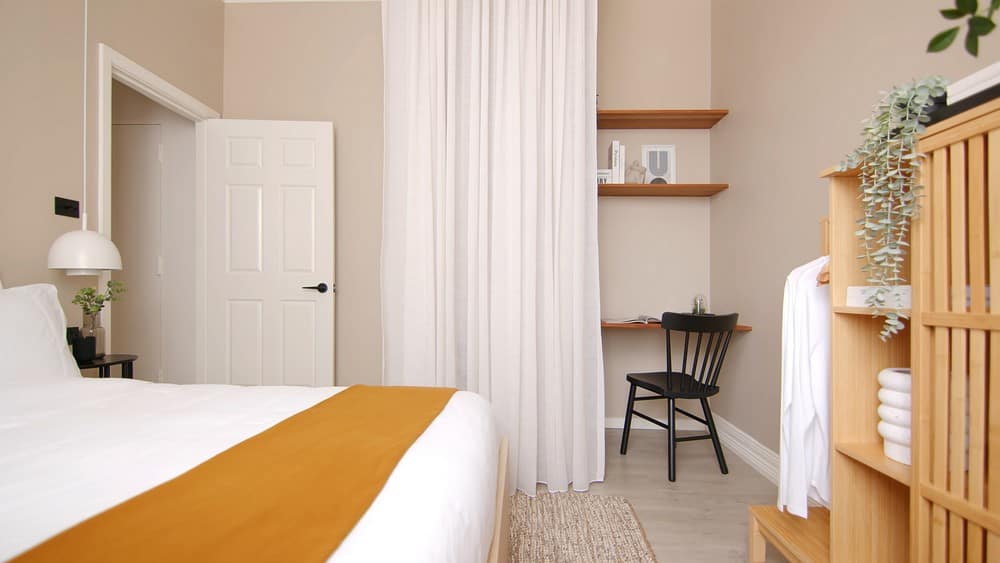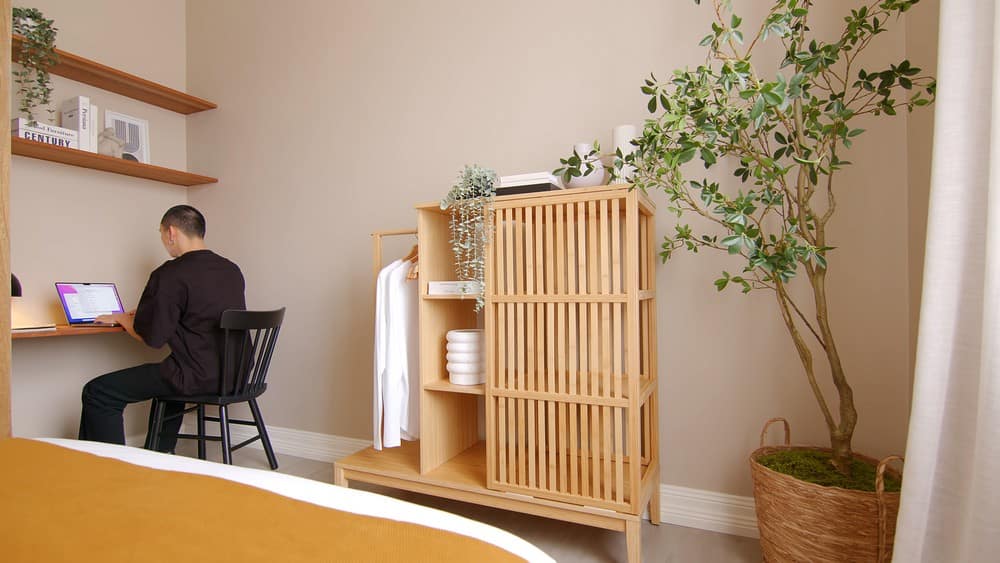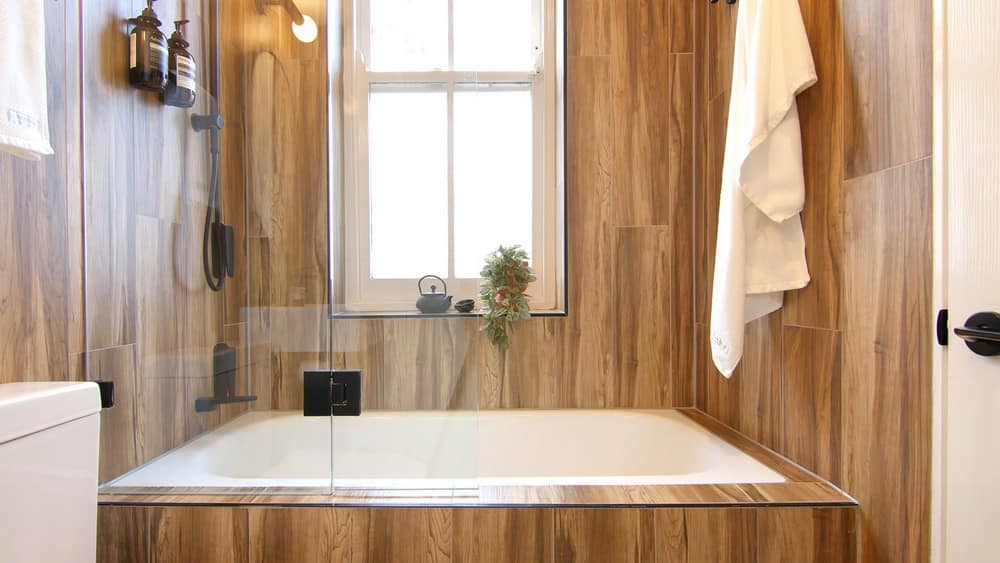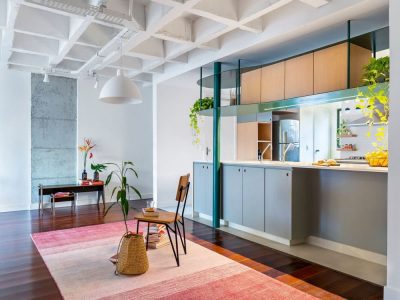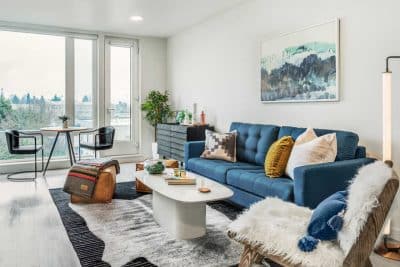
Project: The Ryokan Manly House
Architects: Dform Project
Interior Design And Construction: Dan Yang
Interior Design And Styling: Sunny Wang
Model & Fashion Designer: Romon Yang
Location: Manly, New South Wales, Australia
Area: 52 m2
Year: 2021
Photographs: Never Too Small / Nam Tran
The Ryokan Manly House is located in the heart of Manly, right in front of the famous Manly Beach, an iconic Australian beach frequented by tourists, surfers, and volleyballers. The building was originally a two-story Victorian-style tavern, built in the late 18th century. Over the years, two extra stories were built on top, turning it into a four-story mix-use building, with ground-floor shops and upper-story apartments.
Before the redesign by Dan Yang from Dform Projects, the floor plan was not particularly well thought out… not a lot of that gorgeous Manly sunshine made its way into the 52sqm apartment. This, alongside the complex plumbing, created a challenge for the architects that required a creative design solution. The architects demolished the bedroom wall to allow natural light to penetrate deeper into the apartment and moved the bathroom away from the entrance. They also opened up the kitchen, living, and dining spaces, combining them into a larger, overlapping area.
The introduction of floor-to-ceiling timber brought the ‘outside’ in, enhancing the ‘natural’ feel of the apartment, a nod to the beautiful surroundings at the clients request to create ‘a uniquely Manly experience’. This feeling is evident from the first point of entry where beauty and function meet. The foyer is a hybrid of a mudroom and a genkan, a Japanese entryway. There is a niche to hang jackets and place your keys. Below the niche is a pocket for shoe storage.
The entrance. A floating platform was created in the living area creating a Tatami-style living area that also leads to the bedroom. In the kitchen, matte black elements meet bronze mirrors for the kitchen splashback. The architects decided a bronze mirror in this wooden context can create a softer ambient reflection of the surrounding.
The kitchen. The kitchen bench blends seamlessly into the bedroom platform. In entering the bedroom, there is a zen garden with a bonsai tree coming out of the wall. The garden sits behind a glass wall that connects with the kitchen. Zero maintenance Bonsai Tree from lifelike materials, strategically placed under the skylight, so around 12-1 everyday natural sunlight comes into the space and shines on the Bonsai. On the other side of the garden is a sheer curtain that allows light to pass through to the bedroom but also provides privacy.
Beside the mattress, two small custom niches act as bedside tables, above which are two wall lights for night time ambiance. Next to the bedroom is a meditation space. The entry to the meditation space is through a small window opening inspired by traditional Japanese teahouses. The architects intentionally lowered the ceiling and raised the platform to compress the vertical space directing you to sit on the platform once passed through the opening. Here, the architects added another zero maintenance vertical garden. In this room, you can detach from work and stress.
The meditation space. There is roughly 15m3 of storage space underneath the bedroom and the meditation room which can be used for storing bulky and seasonal items. The Second bedroom is hidden on the other side of the main entrance. When the door to the bedroom opens, the timber cladding partition wall becomes an extension of the timber Genkan. A small but practical study is hidden behind the foyer extension.









